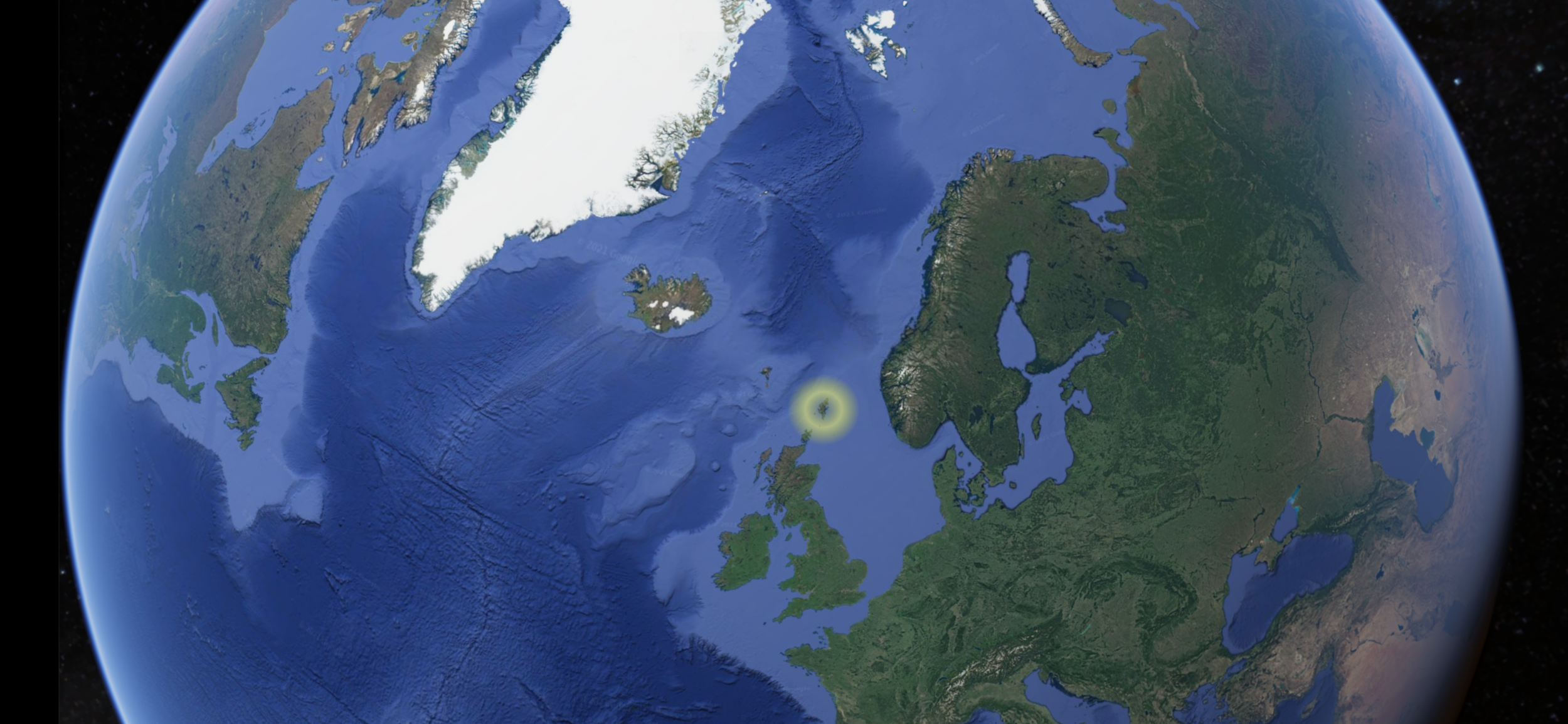
The history of Shaetlan – celebrating diversity
The earliest evidence of human settlement in Shetland is the shell midden of West Voe dated 4200-3600 BC. These settlers were hunter/fisher-gatherers and we don’t know when they came to Shetland or where from, and we also have no way of knowing what language(s) they spoke. The Indo-European languages had not arrived in these areas at the time.
At some point around 3700-3600 BC we see evidence of a farming lifestyle in West Voe, for example that cattle, sheep and goat bones now start appearing in the middens. We also get fragments of ceramics. The tombs, tools and pottery show similarities with those in western Scotland, but not with those in Orkney and Caithness. It therefore looks like these neolithic farmers came to Shetland directly from the western Scottish mainland and not via Orkney. They probably came in waves rather than in one big colonising settlement. It was these settlers who brought the kye and the sheep to Shetland which are the ancestors of the current native Shetland breeds of kye and sheep. The horse would only start appearing in Shetland some 1,000-1,500 years later.
The fisher/hunter-gatherers that were already in Shetland when the farming population came seem to have gradually adopted the new ways and blended in with the new population. What languages these people spoke is again impossible to know, but the Indo-European languages would still not arrive in these parts of the world until at least some 2,500 years later.
We’ll fast forward some 4,000 years to 4-500 AD. By now all of Europe has been settled by speakers of different Indo-European languages for 1,500 years or more. We have seen the Greek and Roman empires come and go. And at around 400 AD there is a lot of migration and population movement in Europe.
By now the entire British and Irish mainlands are settled by speakers of various Celtic languages. In the north of Scotland we have the Picts. The Picts spoke a language that has long remained an enigma, but that we now think was probably Celtic and of the same branch as Welsh.
At around 4-500 AD, possibly even as early as around 300 AD, the Picts settle in Shetland. At the same time the remaining Roman troops in Britain move out and have made deals with mercenaries from various Germanic tribes to come and act as peacekeepers. The purpose was to control the Celtic tribes that were threatening the Roman settlements. The last Roman legion leaves Britain year 407 AD and at the same time mercenaries speaking varieties of the North Sea Germanic languages migrated to Britain: the Jutes came from Jutland in what is now northern Denmark; the Angles came from the North Sea area of what is now southern Denmark and northern Germany; the Saxons came from the North Sea area of what is now northern Germany and the Netherlands; and the Frisians came from the North Sea area of what is now the Netherlands and northern Belgium.
These Germanic tribes spoke distinct but probably mutually intelligible varieties of North Sea Germanic languages. They settled in different areas of the British mainland: the Jutes settled in what is now Kent in south-eastern England; the Frisians settled just north of that and rather quickly came to blend in with their neighbouring Germanic tribes; the Saxons settled in what is now south-central and south-western England; and the Angles settled in two large areas: Mercia, which is now central and eastern England, and Northumbria, which is now northern England and southern Scotland.
These main areas are linguistically relevant: it was the languages of these four main tribes that would become Old English. But Old English was never one unified, monolithic language. Rather, it was always four distinct dialects: the Kentish Old English (spoken by the descendants of the Jutish settlers), the West Saxon Old English (spoken by the descendants of the Saxon settlers), the Mercian Old English (spoken by the descendants of the Angles that settled in Mercia) and the Northumbrian Old English (spoken by the descendants of the Angles that settled in Northumbria). We don’t have much in the way of traces of Kentish Old English left. We have a fair bit of material in West Saxon Old English, because that was the language of King Alfred and he commissioned a lot of translations from Latin to the language of the people, i.e. his language and the language spoken in his kingdom. So most of our information on Old English is from the West Saxon variety. We don’t have much left of Mercian Old English, but we do have some left of Northumbrian Old English.
These four varieties of Old English would be fairly established by about 600 AD, at which time speakers of Gaelic started migrating from Ireland to western Scotland. With this, two varieties of Gaelic emerged: Irish Gaelic and Scots Gaelic. This means that Scots Gaelic and Northumbrian Old English established themselves at roughly the same time in Scotland. Both of them gradually expanding: Scots Gaelic expanding from the west inwards, and Northumbrian Old English expanding from the south east towards the north and centre.
By about 800 AD we are therefore aware of these main linguistic groups on the British Isles: Gaels in Ireland and north-western Scotland. Picts in northern Scotland and the northern isles (Orkney and Shetland). Northumbrian Old English in central and southern Scotland. Mercian Old English in northern, central and eastern England. Welsh in Wales and Cornish in Cornwall. West Saxon Old English in south-central and southern England. And finally Kentish Old English in south-eastern England.
And now the Norse expansion starts.
Shetland was first settled by speakers of Western Norse around 790. We don’t know exactly what happened with the Pictish population that was already living in Shetland at the time. Very little remains of their language: the three place names Yell, Unst and Fetlar are thought to be pre-Norse, but other than that there are hardly any linguistic traces of the previous population.
Speakers of Western Norse also colonised Faroe and Iceland, as well as raided and colonised the Scottish Western Isles and Ireland. At roughly the same time speakers of Eastern Norse raided then colonised the eastern coast of England. By 900 the Danelaw area had expanded to include nearly all of eastern and northern England, and pushed English Mercia to the west. Northumbria remained independent of Danelaw. The long rule of Danelaw brought a lot of Eastern Old Norse influence on the language of the area.
At the same time Shetland now belonged to the Norwegian king and the dominant language in both Shetland and Orkney was Western Norse, which would evolve into Norn. Meanwhile the Northumbrian Old English would evolve into Scots and Mercian Old English would evolve into English.
Norn would end up being spoken for about 1000 years in Shetland. In the middle ages speakers of Scots would start moving to Shetland in greater numbers. When Shetland was pawned to Scotland in 1469 the language of administration became Scots, and Shetland gradually became a bilingual place in Scots and Norn. The two languages would co-exist for another 250 years or so. At the same time there was a lot of Hanseatic trade as well as a lot of trade with the Dutch fishing fleet. This means that Shetlanders would have been in long and intense contact with speakers of Middle Dutch and Middle Low German. Shetland was therefore a multilingual place: more and more speakers would be bilingual in Scots and Norn, and at the same time would be proficient in Dutch and Low German. This was the linguistic setting that would shape modern Shaetlan.
The last known speaker (or rememberer) of Norn died in 1850. With that Norn became extinct.
English would gain more and more influence in Scotland with the Union of the Crown in 1603. James I translated the bible into English (not Scots) in 1611. So gradually it would be English, not Scots, that would be promoted in Scotland. This would eventually spread to Shetland too. In 1709 the Society in Scotland for Propagating Christian Knowledge was established, and they set about establishing schools where the medium of instruction was English. This further established and promoted English over Scots. By 1827 there was a school in every parish of Shetland, and with that came the attitude that English was a more valuable language than Shaetlan.
This is not linguistically justified. Shaetlan has been shaped by its rich history into a unique language with a unique structure. It is every bit as valuable as any language in the world, and every bit as complex and sophisticated as any other language in the world. Both the vocabulary and grammar is a blend of Norn, Scots, English, Dutch and Low German. Shaetlan has grown and evolved with the history of Shetland, and embodies the soul of the place. It is, quite simply, the breath of the culture of Shetland.
Shetland is now a bilingual community in English and Shaetlan. This diversity is an asset and should be a source of pride. It should also be celebrated and promoted, giving each of the two languages equal space in all areas of society, especially as a medium of instruction in schools.
